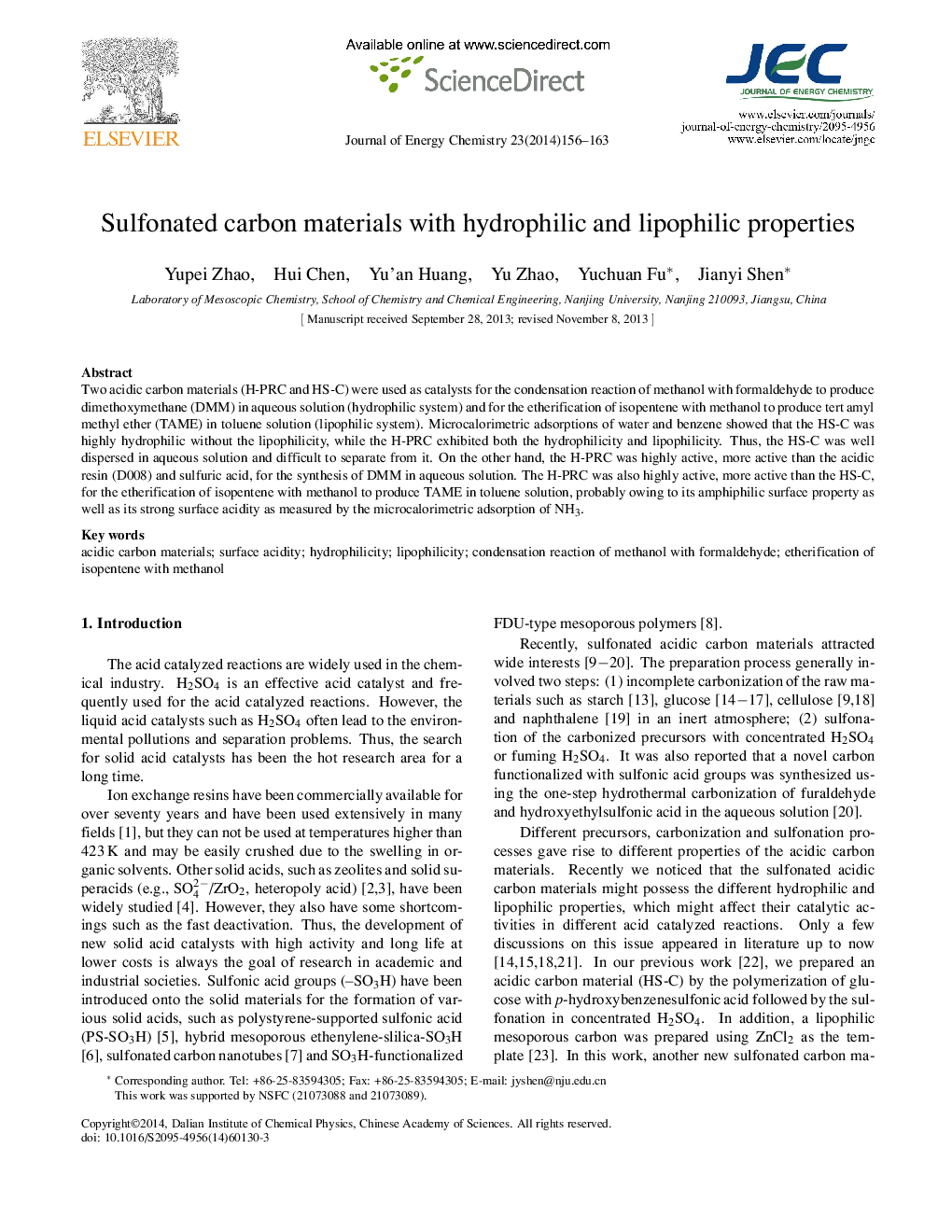| Article ID | Journal | Published Year | Pages | File Type |
|---|---|---|---|---|
| 63808 | Journal of Energy Chemistry | 2014 | 8 Pages |
Two acidic carbon materials (H-PRC and HS-C) were used as catalysts for the condensation reaction of methanol with formaldehyde to produce dimethoxymethane (DMM) in aqueous solution (hydrophilic system) and for the etherification of isopentene with methanol to produce tert amyl methyl ether (TAME) in toluene solution (lipophilic system). Microcalorimetric adsorptions of water and benzene showed that the HS-C was highly hydrophilic without the lipophilicity, while the H-PRC exhibited both the hydrophilicity and lipophilicity. Thus, the HS-C was well dispersed in aqueous solution and difficult to separate from it. On the other hand, the H-PRC was highly active, more active than the acidic resin (D008) and sulfuric acid, for the synthesis of DMM in aqueous solution. The H-PRC was also highly active, more active than the HS-C, for the etherification of isopentene with methanol to produce TAME in toluene solution, probably owing to its amphiphilic surface property as well as its strong surface acidity as measured by the microcalorimetric adsorption of NH3.
Graphical AbstractThe microcalorimetric adsorption of water and benzene indicated that the HS-C was highly hydrophilic while the H-PRC was amphiphilic (both hydrophilic and lipophilic).Figure optionsDownload full-size imageDownload as PowerPoint slide
